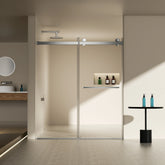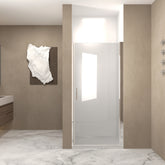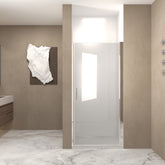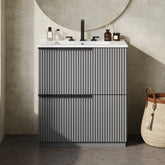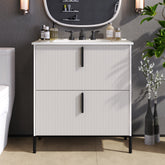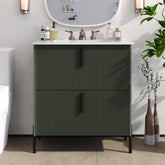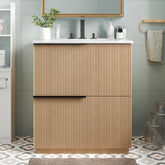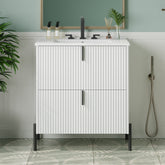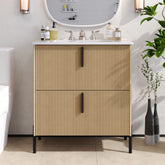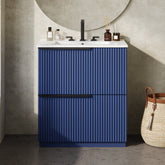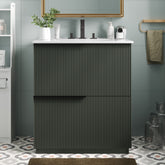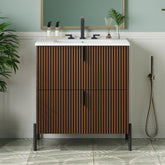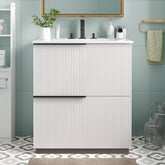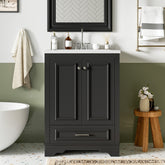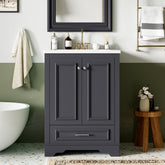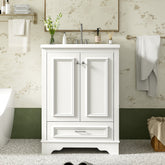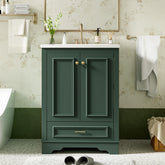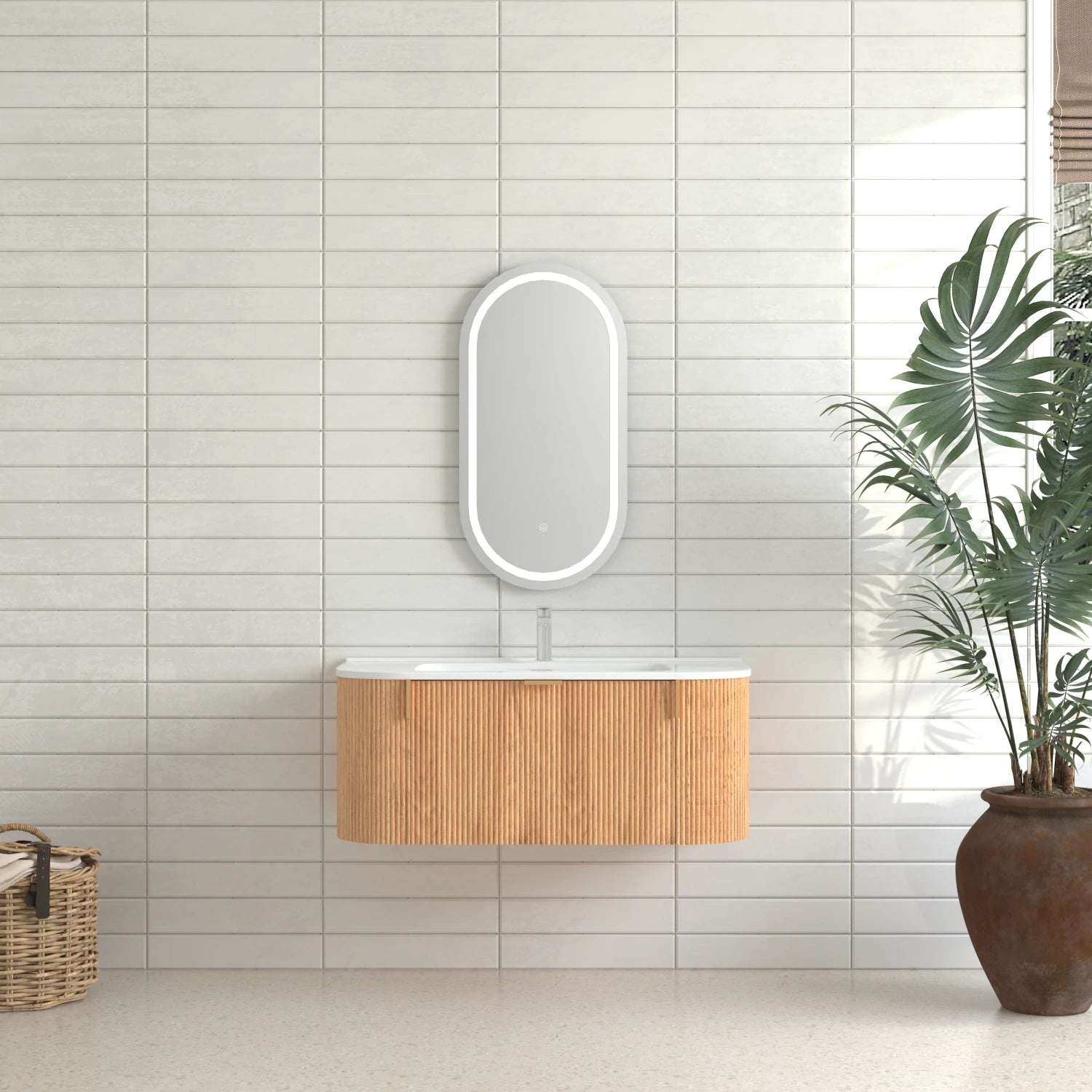Tiled Walls, Wallpaper, or Paint? What Works Best in Bathrooms
1. Introduction: Choosing the Right Bathroom Wall Finish
When I first started planning my bathroom remodel, I never realized how tricky it would be to choose the right wall finish. Should I go with tiled walls for their durability, the bold patterns of wallpaper, or just stick to simple paint? It turns out, selecting the best wall finish for a bathroom isn’t just about aesthetics—it’s also about long-term performance.
Bathrooms are naturally humid environments, and without the right materials, that moisture can lead to peeling paint, moldy wallpaper, or damaged surfaces. That’s why understanding your options—bathroom tiles vs wallpaper vs paint—is crucial. Each material offers different benefits in terms of water resistance, maintenance, and style, and the decision can significantly affect both the look and the lifespan of your space.
In this article, I’ll walk you through what I’ve learned about the pros and cons of each option, from waterproof tile ideas to moisture-resistant paint and everything in between. If you’ve ever searched, “What works best on bathroom walls?” or “Paint or tile in the bathroom?” — this guide is for you.
2. Tiled Walls: Durable and Classic
When it comes to bathroom renovations, tiled walls are often the first option that comes to mind—and for good reason. After exploring various bathroom wall options, I quickly learned that tile is the gold standard in areas where moisture is constant. Whether it's around the shower, bathtub, or sink, tiles provide a level of waterproof protection that paint and wallpaper simply can't match.
One of the things I love about tile is the sheer variety. From sleek ceramic tiles to durable porcelain and stylish mosaic patterns, there’s a design for every taste. Tiles can instantly elevate the look of a bathroom, whether you're aiming for a modern, rustic, or classic vibe. Plus, they’re built to last. Properly installed tile can hold up for decades without needing much replacement, making it a smart long-term investment.
But I won’t lie—tiles come with their challenges. They’re usually more expensive than other bathroom wall finishes, both in terms of materials and labor. Unless you're an experienced DIYer, tile installation is best left to the professionals. And then there’s the grout. Keeping grout lines clean and mold-free takes regular effort, which I found a bit tedious.
Still, if you're dealing with high-moisture zones or want a clean, classic look that won’t peel or warp over time, tile is hard to beat. It’s no surprise that so many homeowners still choose it when comparing bathroom tiles vs wallpaper vs paint.
3. Wallpaper: Stylish but Tricky
I’ve always loved the idea of using wallpaper in the bathroom. With so many bold patterns and unique textures available, wallpaper can instantly turn a plain bathroom into a stylish, designer-inspired space. When I started comparing bathroom wall options, wallpaper really stood out in terms of visual impact and creative flexibility. It’s also one of the easiest materials to update—perfect for someone like me who loves to refresh the look of a space every few years.
But after doing some digging, I realized there are a few catches. Bathrooms are humid by nature, and traditional wallpaper doesn’t always hold up well. I read countless stories of wallpaper peeling or bubbling in high-moisture areas, especially if the ventilation isn’t great. That’s when I discovered the importance of using moisture-resistant wallpaper or better yet, vinyl-coated wallpaper that's specifically designed for damp environments.
Even with the right material, wallpaper in a bathroom requires special attention. You’ll need a high-quality adhesive made for humid spaces, and it’s best to avoid placing it near the shower or bathtub. I found that half baths or powder rooms—where there’s little to no steam—are the ideal places to let wallpaper shine without worry.
So, while wallpaper might not be the most durable option compared to tiled walls or paint, it definitely wins when it comes to making a statement. If you’ve been searching for a way to add character to your bathroom without committing to tile, wallpaper—used wisely—is a beautiful alternative.
4. Paint: Affordable and Flexible
Out of all the bathroom wall finishes I explored, paint was definitely the most budget-friendly and straightforward option. If you're like me and want the freedom to change up your color scheme without too much hassle or expense, paint is hard to beat. With countless color choices and finishes available, it’s easy to create any look—from calming spa vibes to bold, modern statements.
One of the biggest advantages of using paint in a bathroom is its affordability. Compared to tiled walls or wallpaper, paint costs much less and can be applied relatively quickly. It's also ideal if you're planning to refresh the space frequently or want to experiment with trends. Personally, I found it empowering to know that I could completely transform the mood of my bathroom with just a few coats of color.
However, I quickly realized that not all paints are created equal—especially in high-humidity areas. Bathrooms can cause regular paint to peel, bubble, or grow mildew over time. That’s why I made sure to choose a mold-resistant bathroom paint with a satin or semi-gloss finish. These finishes are more durable and easier to wipe clean, which is essential in a room that sees a lot of moisture.
While paint isn't ideal for areas that come into direct contact with water (like right next to a shower), it's perfect for the upper walls, ceilings, or any space that's not constantly wet. So if you’re debating between bathroom tiles vs wallpaper vs paint, and budget or flexibility is a top concern, a high-quality paint job might just be the right choice for you.
5. Key Factors to Consider When Choosing
When I was trying to decide between tiled walls, wallpaper, and paint for my bathroom, I realized that the “right” choice really depends on a few key factors. There’s no one-size-fits-all answer—so I had to consider what mattered most for my space, style, and lifestyle. Here’s what helped guide my decision-making:
Moisture & Ventilation
The first thing I asked myself was, “How humid is my bathroom?” If your bathroom has poor ventilation or tends to stay steamy after every shower, then moisture-resistant finishes are a must. For me, that ruled out standard wallpaper right away, unless I used a vinyl-coated option in a half bath. In high-moisture areas, I leaned heavily toward bathroom tiles, which are built to withstand water without warping, peeling, or growing mold.
Budget
If you’re working with a tight budget like I was, cost becomes a big consideration. Paint is by far the most affordable, both in material and labor. Wallpaper sits in the middle, depending on the type and installation method, while tile is the most expensive due to the cost of both product and professional installation. But tile is also the most durable, so it might pay off in the long run.
Aesthetics
I also thought a lot about the vibe I wanted to create. Was I going for a modern spa, something bold and artistic, or a clean minimalist look? Tiled walls gave me a classic, timeless feel—especially with subway or mosaic tile. Wallpaper opened up opportunities for bold patterns and high-impact design, perfect for small powder rooms. Paint offered endless flexibility in color and tone, which let me play around with style without long-term commitment.
Maintenance
Finally, I had to be honest with myself about how much upkeep I was willing to do. Grout cleaning with tile can be a chore, especially in areas that see daily water exposure. Wallpaper may need replacing if it starts to peel or bubble. And while paint can be touched up easily, it might require more frequent reapplications over time due to humidity-related wear. In the end, I chose based on what I could realistically maintain while keeping the bathroom looking fresh and clean.
So, whether you're deciding between bathroom tiles vs wallpaper vs paint, think about your space’s unique conditions, your personal style, and how much time and money you’re willing to invest—both now and in the future.
6. Expert Design Combinations
After diving into the pros and cons of tiled walls, wallpaper, and paint, I realized something: you don’t have to choose just one. Some of the most stylish bathrooms I’ve seen mix and match these materials in smart, balanced ways. When done right, combining finishes can enhance both function and design—and that’s exactly what I wanted for my own space.
Tile on the Bottom, Paint on Top
One of my favorite combos is using tile on the lower half of the wall—especially around the sink or shower—and paint on the upper half. This mix gave me the water protection I needed while keeping the upper walls open to whatever color scheme I wanted. It’s a practical way to stretch the budget too, since tile can be costly to install floor to ceiling. Plus, the visual contrast between sleek tiles and a soft matte or satin paint creates a really polished look.
Statement Wallpaper in Powder Rooms
While I was cautious about using wallpaper in full baths, powder rooms felt like the perfect place to take a design risk. I went bold with a patterned wallpaper that instantly gave the space personality. Since powder rooms aren’t used for bathing, humidity wasn’t a major concern, and I didn’t have to worry about the wallpaper peeling or bubbling. It was a simple way to create a "wow" factor without sacrificing durability.
Tile Backsplashes with Painted Walls
Another great trick I picked up: combining tile backsplashes with painted walls. I added tile just behind the vanity area to protect the wall from water splashes and toothpaste mishaps, while leaving the rest of the bathroom painted. It kept things easy to clean without overwhelming the room with tile. Plus, I was able to match the backsplash design with my paint color for a cohesive, designer look.
Ultimately, the choice between bathroom tiles, wallpaper, or paint doesn’t have to be either-or. Thoughtful combinations let you take advantage of each material’s strengths—durability, style, and affordability—while creating a space that’s both functional and beautiful.
7. Conclusion: What Works Best for You?
After exploring the pros and cons of tiled walls, wallpaper, and paint, I came to a clear realization—there’s no universal best choice for bathroom walls. What works best depends entirely on your specific space, your style preferences, and your willingness to maintain it over time. Each option offers something unique: tile is tough and timeless, wallpaper brings bold personality, and paint is flexible and budget-friendly.
Quick Recap
- Bathroom tiles: Ideal for wet zones, long-lasting, and stylish—but pricey and grout needs cleaning.
- Wallpaper: Great for making a design statement in low-moisture areas, but sensitive to humidity.
- Paint: Budget-friendly and easy to update, though not ideal for high-moisture zones unless you choose the right finish.
Quick Checklist to Help You Decide
- High humidity? → Go for tile or mold-resistant paint.
- Low-traffic powder room? → Consider wallpaper for visual impact.
- On a budget? → Paint offers the best flexibility at the lowest cost.
- Love bold design? → Mix materials: tile + wallpaper or paint.
Final Thoughts
In my experience, the smartest choice balances both functionality and design harmony. Don’t just follow trends—choose what suits your lifestyle and the demands of your bathroom. Whether you stick with one finish or blend a few, your wall treatment should enhance the space visually while standing up to daily use. And remember, sometimes the most stunning results come from combining materials in unexpected ways.
So—tiles, wallpaper, or paint? Now that you’ve got all the facts, the choice is in your hands.
Featured Products
AISU 30" Fluted Design Freestanding Bathroom Vanity with Ceramic Sink, Gray
- $416.74
- $416.74
- Unit price
- / per
AISU 30" Ultra Fluted Design Freestanding Bathroom Vanity with Ceramic Sink, With Leg, White
- $428.50
- $428.50
- Unit price
- / per
AISU 30" Fluted Design Freestanding Bathroom Vanity with Ceramic Sink, White
- $416.74
- $416.74
- Unit price
- / per
AISU 30" Ultra Fluted Design Freestanding Bathroom Vanity with Ceramic Sink, With Leg, Green
- $428.50
- $428.50
- Unit price
- / per
AISU 30" Fluted Design Freestanding Bathroom Vanity with Ceramic Sink, Wood
- $432.41
- $432.41
- Unit price
- / per
AISU 30" Fluted Design Freestanding Bathroom Vanity with Ceramic Sink, With Leg, White
- $413.40
- $413.40
- Unit price
- / per
AISU 30" Ultra Fluted Design Freestanding Bathroom Vanity with Ceramic Sink, With Leg, Wood
- $428.50
- $428.50
- Unit price
- / per
AISU 30" Fluted Design Freestanding Bathroom Vanity with Ceramic Sink, Blue
- $416.74
- $416.74
- Unit price
- / per
AISU 30" Ultra Fluted Design Freestanding Bathroom Vanity with Ceramic Sink, Green
- $432.41
- $432.41
- Unit price
- / per
AISU 30" Fluted Design Freestanding Bathroom Vanity with Ceramic Sink, With Leg, Dark Brown
- $413.40
- $413.40
- Unit price
- / per
AISU 30" Ultra Fluted Design Freestanding Bathroom Vanity with Ceramic Sink, White
- $432.41
- $432.41
- Unit price
- / per
AISU 24" Modern Freestanding Bathroom Vanity with Ceramic Sink, Black
- $333.30
- $333.30
- Unit price
- / per
AISU 24" Modern Freestanding Bathroom Vanity with Ceramic Sink, Dark Grey
- $333.30
- $333.30
- Unit price
- / per
AISU 24" Modern Freestanding Bathroom Vanity with Ceramic Sink, White
- $333.30
- $333.30
- Unit price
- / per
AISU 24" Modern Freestanding Bathroom Vanity with Ceramic Sink, Green
- $333.30
- $333.30
- Unit price
- / per
